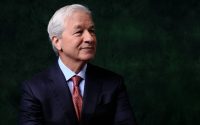India’s TikTok Ban: What Lessons Does It Hold for the U.S.
In India, a country of 1.4 billion, it took TikTok just a few years to build an audience of 200 million users. India was its biggest market. Then, on June 29, 2020, the Indian government banned TikTok, along with 58 other Chinese apps, after a simmering conflict between India and China flared into violence at their border.
A popular form of entertainment, which had not been the subject of political debate, vanished overnight. Now, as politicians are wrangling in Washington over a plan that could shut access for the 170 million Americans using TikTok, the example set by India gives a foretaste of what may come — and how audiences and other social media companies catering to them might respond.
TikTok, owned by ByteDance in Beijing, came to India early, establishing a wide base in 2017 in dozens of the country’s languages. Its content — short videos — tended to be homey and hyperlocal. An endless scroll of homemade productions, many of them shot in small towns or farms and set to popular music, helped while away the hours across the world’s cheapest and fastest-growing mobile-data network. As it has in the United States, TikTok became a platform for entrepreneurial extroverts to build businesses.
Veer Sharma was 26 when the music stopped. He had collected seven million followers on TikTok, where he posted videos of himself and friends lip-syncing and joking around to Hindi film songs. He was the son of a laid-off millworker from the central Indian city of Indore and barely finished formal schooling. His TikTok achievements filled him with pride. He felt “beyond happy” when people recognized him on the street.
They were happy to see him, too. Once, Mr. Sharma said, an “elderly couple met me and said they would watch my show before going to bed, for a laugh.” They told him that his “show was a way out of their daily life’s drudgery.”
With his new stardom, Mr. Sharma was earning 100,000 rupees, about $1,200, a month. He bought a Mercedes. After the ban in 2020, he barely had time to make one last video for his fans. “Our times together will be ending soon, and I don’t know how or when we will be able to meet again,” he told them.
“Then, I cried and cried,” he said.
Yet short videos, including many preserved from TikTok and uploaded to other sites that aren’t banned, continue to draw Indians.
India’s online life soon adapted to TikTok’s absence. Meta’s Instagram swooped in with its Reels and Alphabet’s YouTube with Shorts, both TikTok-like products, and converted many of the influencers and eyeballs that had been left idle.
The services were popular. But something was lost along the way, experts said. Much of the homespun charm of Indian TikTok never found a new home. It became harder for small-time creators to be discovered.
Nikhil Pahwa, a digital policy analyst in New Delhi, tracks the overall change to the departure from TikTok’s “algorithms, its special sauce,” which was “a lot more localized to Indian content” than the formulas used by the American giants that succeeded it.
Several Indian companies tried to get into the gap caused by the disappearance of Chinese competition. But America’s tech giants, with their deeper pockets and expanding global audiences, came to dominate India. The country is now the biggest market for both YouTube (almost 500 million monthly users) and Instagram (362 million), with roughly twice as many users as either has in the United States.
The decision by India to cut its population off from TikTok was as sudden as the American efforts, which began in 2020, are protracted. But the motivation was similar — and even more dramatic. Whereas the United States and China are engaged in a new kind of cold war over economic dominance, India and China have had troops standing off at their border since 1962. In 2020, that frozen conflict turned hot. In one night of brutal hand-to-hand combat, 20 Indian soldiers were killed, along with at least four Chinese, which China never officially confirmed.
Two weeks later, India switched off TikTok. The app disappeared from Google and Apple stores, and its website was blocked. By then, India was well practiced in blocking objectionable websites and even shutting down mobile data across whole regions, in the name of maintaining public order.
There were few other signs of retaliation by India, but this one action commanded the public’s attention. The list of Chinese apps that India has banned continues to grow, now to 509, according to Mr. Pahwa.
Until then, India’s internet had presented an open market to China. In contrast to India’s domestic media companies, tech start-ups were free to take investment from China and other countries. TikTok was only the most popular among dozens of Chinese-owned games and services distributed to Indians online.
Since at least 2017, after a similar border skirmish, the possibility that Chinese consumer technology might pose a risk to India’s sovereignty had been circulating in national security circles.
Indian officials had expressed concern that Chinese-owned apps could provide Beijing with a potent messaging tool within India’s raucous media environment. Just two months before the ban, India announced new restrictions on investments from any country “sharing land border with India.” Technically, that would apply to Bangladesh, Bhutan, Nepal and Pakistan. But China was understood to be the real target.
On June 29, 2020, the official order that blocked TikTok and dozens of lesser-known Chinese services did not mention China explicitly, nor the bloody fight on the border. Instead, the measure was described as a matter of “data security and safeguarding the privacy” of Indian citizens from “elements hostile to national security and defense of India.”
In subsequent years, India’s government has used the rationale about maintaining the “safety and sovereignty of Indian cyberspace” to dictate terms even to American tech companies. It has complained to Apple and Twitter, as well as to Meta and Google, sometimes to prevent speech that is critical of Prime Minister Narendra Modi and his Bharatiya Janata Party.
But the government bore no grudge against TikTok’s influencers. After the ban went into effect, the B.J.P. reached out to Mr. Sharma, who said he had become depressed. Between losing his income and his fame, he felt his “world crashing down.” He had already been contacted by Moj, a Bangalore-based TikTok rival. Mr. Sharma’s career and income bounced back after he posted a clip with his state’s chief minister and started making promotional videos with other B.J.P. office holders. He feels proud now to be helping further Mr. Modi’s political agenda.
Another TikTokker who was temporarily “heartbroken” by the ban was Ulhas Kamathe, a 44-year-old dad from Mumbai. He somehow achieved a moment of international fame by devouring chicken platters while murmuring “chicken leg piece” with his mouth full, an instant meme. After losing his nearly seven million TikTok followers overnight, he says he has recovered — by finding five million on YouTube, four million on Instagram and three million on Facebook.
“In the past three years, I have rebuilt without any help — all by myself,” he said.


